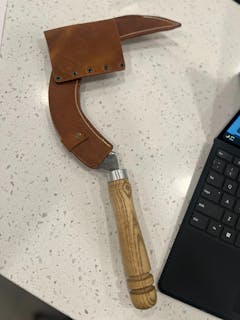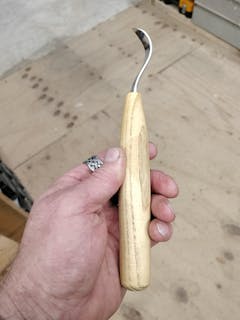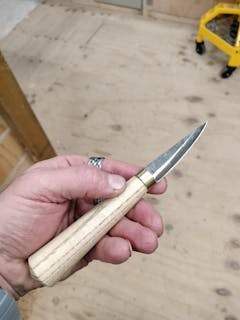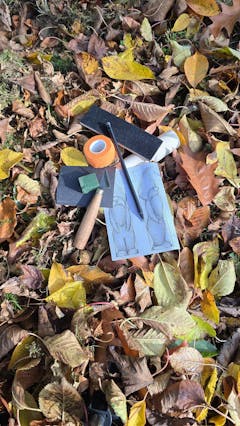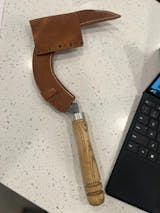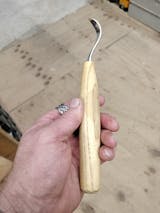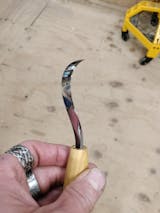Sorry, there are no products in this collection.
What Are Spoon Blanks and Why Are They Essential?
Spoon blanks are pre-shaped pieces of wood used for spoon carving. The wooden spoon blanks eliminate the initial step of cutting out the spoon from a larger piece of wood, providing a reliable starting point for both beginners and experts.
For seasoned carvers, blanks offer creative freedom to modify the design, experiment with different carving styles, or add personalized elements. Wood spoon blanks are also a valuable addition in workshops and demonstrations, as they help students quickly follow along without the need for extensive prep work.
Benefits of Using Pre-Cut Spoon Blanks
For carvers without access to green wood or those who prefer less physical labor, spoon carving blanks are an excellent option. How else can spoon blanks be beneficial? Let’s find out:
- Consistency
Wood blanks for carving help maintain uniformity when producing multiple spoons with similar designs. Ordering equally sized and shaped blanks ensures consistency, minimizes waste, and simplifies the process.
For beginners, this consistency is crucial, as it removes the complexity of rough wood shaping with an axe or other hand carving tools. This frees up time to focus on carving techniques and builds confidence.
- Ease of Use
When carving a spoon, rough shaping of the wood involves significant effort, from selecting a suitable piece to splitting and cutting it into a basic spoon shape.
Additionally, carvers must consider grain direction to avoid splintering, leave extra wood for detailing, and avoid defects like knots.
Using spoon blanks for carving eliminates this time-consuming phase, enabling beginners to practice immediately.
- Eco-Friendly Choice
Wood spoon blanks are an eco-friendly choice for several reasons. They reduce waste by minimizing the offcuts. The production process for spoon blanks is more energy-efficient compared to individual rough shaping. Many blanks are sourced from sustainably managed forests, where trees are replanted to ensure continuous supply.
- Practice Opportunities
Experimenting with spoon carving blanks made from diverse wood species helps beginners explore different carving techniques and learn to handle imperfections.
How to Choose the Right Spoon Blank for Your Project
Matching the right spoon blanks to the project type can make the wooden spoon carving experience a lot more efficient. Here are some guidelines to help you choose wood spoon blanks:
Wood Types and Their Uses
Hardwoods: Ideal for kitchen use due to durability and resistance to absorbing flavors or odors.
- Oak: Durable, dense, and water-resistant. Ideal for everyday kitchen spoons. Can be challenging for beginners due to its hardness.
- Maple: Strong, hard, and easy to carve. A good choice for both beginners and experienced carvers.
- Cherry: Beautiful grain, moderate hardness. Carves well and takes a nice finish.
- Walnut: Strong, durable, and has a rich, dark color. Can be more expensive.
Cons: Harder to carve, requires more effort and sharper carving tools.
Proficiency Level: Intermediate to advanced. Beginners might find hardwoods challenging to work with due to their density.
- Softwoods: Softwoods are more recommended for decorative purposes. They are easier to carve, have less strain on spoon making tools but not as durable for everyday kitchen use.
- Aspen: Light, soft, and easy to carve. Good for decorative spoons.
- Poplar: Soft, lightweight, and easy to carve.
- Linden: Similar to basswood, soft and easy to work with.
- Basswood: Even though it is a hardwood by classification, this wood is soft, simple to carve, and readily available. Ideal for beginners and intricate designs.
- Cons: Less durable, can absorb flavors, not ideal for heavy kitchen use.
- Proficiency Level: Beginner to intermediate. Softwoods are more forgiving and easier to work with.
Size and Thickness
- Beginners: Start with smaller, simpler designs. Thicker wooden spoon blanks are easier to handle and less likely to break during carving.
- Advanced Carvers: Can experiment with thinner, more intricate designs. Thinner spoon blanks for carving require more precision but can result in elegant, lightweight utensils.
Carving Style and Blanks
- Flat Designs: Flat design is a technique that highlights clean lines, simple shapes, and well-defined edges with emphasis on usability rather than excessive decoration.
- Curved Designs: This style of carving is more about organic shapes and flowing lines. Lines in curved designs mimic natural patterns of the wood grain, the curves are carefully crafted to provide a comfortable grip.
Tips for Carving Spoon Blanks Successfully
Carving spoon carving blanks requires preparation, the right hand wood carving tools, proper technique, and thoughtful finishing. Here are some things to consider before you take up a new project:
Preparation
It’s essential to prepare your spoon carving blanks properly from the start. If the blank is rough, sand it lightly to create a smooth surface. This reduces tool skipping and ensures polished results.
Tools to Use
A well-rounded wood carving kit is all you need. A starter wood carving kit typically includes a spoon knife, a straight carving knife, and a small gouge—enough to create simple designs. More advanced kits may include a variety of spoon carving knives, specialized gouges, detail knives, and sharpening tools for maintaining a precise edge.
- Hook knives, also known as spoon knives, are specially designed spoon carving tools that hollow out the bowl of the spoon. Their curved blade allows for efficient scooping motions.
- Gouges, with their U-shaped blades, help carve deeper curves and add texture.
Technique
- Carve with the Grain: Prevent splitting and achieve a smoother finish by carving along the wood grain.
- Start with Rough Shaping: Define the spoon’s outline and remove excess wood.
- Move to Finer Details: Switch to finer tools and work on the details: refine the bowl and handle and add any decorative elements.
Finishing Touches
- Smooth Edges: After carving, sand the spoon to smooth out any rough edges and surfaces.
- Apply Food-Safe Finishes: For functional spoons, it’s important to apply a food-safe finish like mineral oil, beeswax, or a combination of both. This not only protects the wood but also enhances its appearance.
Honing your skills with spoon carving blanks is an excellent way to develop your craftsmanship. Explore the wide variety of carving sets available at forgedsteeltools.com. You will find high-carbon, hand-forged carving kits featuring blanks in various shapes and sizes crafted from oak and ashwood.
